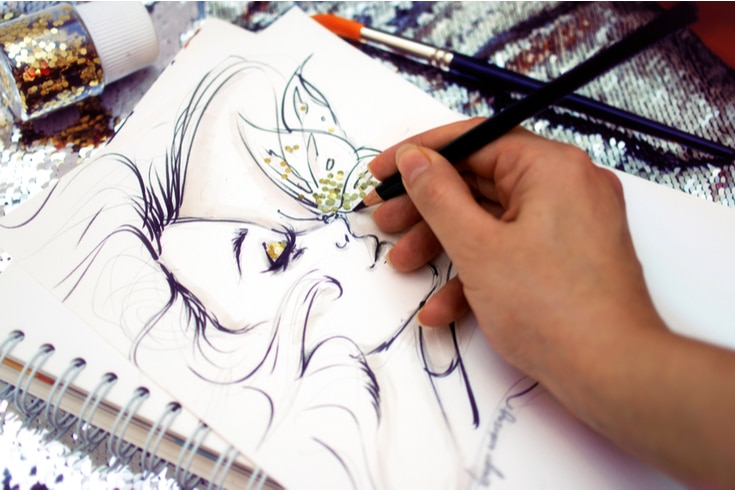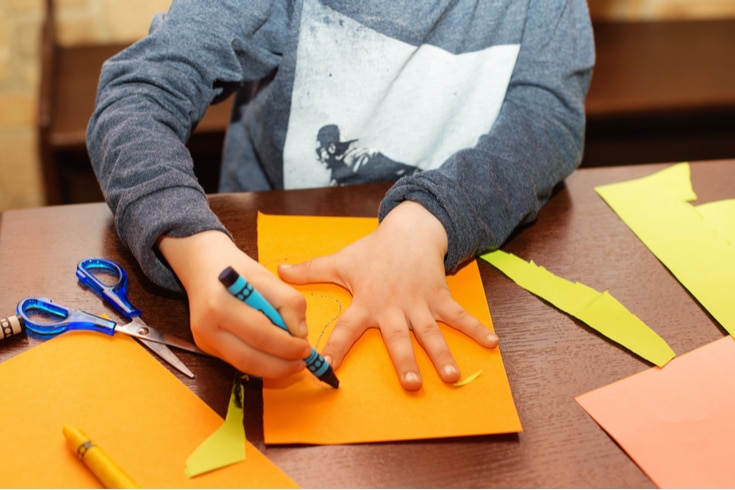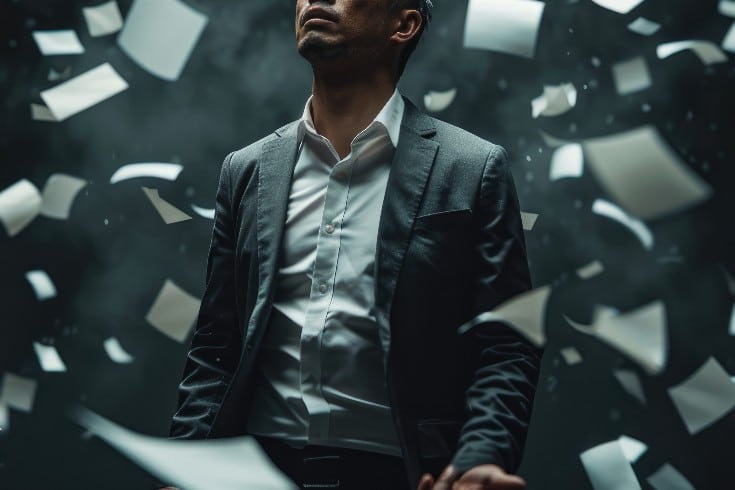Explaining Illustration Tracing and Copyright Law Amidst the Frequent Plagiarism Controversies

A video posted on YouTube in January 2022 by a Youtuber who reveal the secrets or contents (especially the dark side) has become a hot topic. The video pointed out that a popular illustrator was tracing and drawing from photos taken by others, accusing them of ‘plagiarism’. The illustrator in question, who has handled key visuals for popular bands and collaborated with numerous companies, is a well-known figure, and the issue has escalated into a major controversy.
In response to the uproar, the illustrator updated their Twitter, apologizing, “It is true that I posted and sold some of my works, which were created as homage and reconstruction, without obtaining the permission of the rights holders.” However, they also denied the accusations of plagiarism and theft, stating, “I did not trace the photos themselves. I had no intention of plagiarizing in my imitations.”
In light of this ‘plagiarism’ controversy, Pokémon Co., Ltd. determined that the collaborative product (a T-shirt) handled by the illustrator was original. However, they took the situation seriously and announced that they would accept returns and order cancellations.
In this article, we will explain what the ‘plagiarism’ that became a topic of discussion is, and how it relates to the ‘Japanese Copyright Law’.
Tracing and Copying
Tracing and copying are indispensable methods when practicing illustration.
Tracing involves laying a piece of paper over a model (original drawing) and tracing it. In the analog method, you trace over the model with tracing paper, while in the digital method, you create a new layer over the model and trace it.
Copying, on the other hand, involves drawing an illustration while looking at a model.
Both methods are important training to improve your drawing skills. Also, you can learn various techniques embedded in the original drawings by professional illustrators through the process of drawing.
However, when drawing illustrations, it is necessary to be aware of the copyright of tracing and copying.
What is “Torepaku”
“Torepaku” means to trace and steal someone else’s photos or illustrations, but it does not necessarily mean copyright infringement just because you traced it.
Tracing and copying are not always illegal, it depends on the degree.
The copyright as a property right includes the “right to reproduce the work in a tangible form by printing, photographing, copying, recording, filming, etc.” (Article 2, Paragraph 1, Item 15 of the Japanese Copyright Law), and the “right to translate, arrange, transform, dramatize, film, or otherwise adapt the work” (Article 27 of the Japanese Copyright Law), both of which are rights exclusively possessed by the copyright holder.
Being labeled as “Torepaku” is an accusation of infringing on the right of reproduction or the right of adaptation.
Reproduction and Adaptation
There is a precedent from the Supreme Court regarding reproducing and adaptation.
Reproducing should be understood as the act of creating the same thing as an existing work by relying on it, or adding modifications, additions, changes, etc. to the concrete expression, without creatively expressing new thoughts or feelings, maintaining the identical essential personalities of the expression, and enabling those who come into contact with it to directly perceive the essential personalities of the expression of the existing work.
Adaptation should be understood as the act of creating another work that can directly perceive the essential personalities of the expression of an existing work by those who come into contact with it, while maintaining the identical essential personalities of the expression, by relying on an existing work and adding modifications, additions, changes, etc. to the concrete expression, and creatively expressing new thoughts or feelings.
Supreme Court Judgment, June 28, 2001 (Heisei 13)
In other words, copyright infringement occurs when the “identical essential personalities of the expression are maintained” or when “those who come into contact with it can directly perceive the essential personalities of the expression of the existing work”. Therefore, whether you trace or copy, as long as it does not reach these levels, it will not constitute copyright infringement.

Litigation Surrounding Tracing
There are two types of lawsuits related to tracing: cases where the copyright holder claims their copyright has been infringed by tracing, and cases where the creator, accused of plagiarism, claims their rights have been infringed.
Case of Copyright Infringement by Tracing
In one case, the plaintiff claimed that the defendant had infringed their copyright (reproduction rights, adaptation rights, and transfer rights) by tracing a photo material they were selling without permission and using it on the back cover of their own self-published novel. The plaintiff sought damages from the defendant based on this unlawful act.
The defendant admitted to creating an illustration based on the photo material found online of a “man drinking coffee”. However, they argued that they only traced the outline of the man’s head to his shoulders and the outline of the coffee cup and the hand holding it. They claimed that they did not refer to the photo material for the so-called “coloring” outside the lines, but instead colored it in monochrome on their own.
The court acknowledged that the photo in question is a copyrighted work and that the illustration was created based on the photo material. However, the court also noted that:
- The illustration is drawn in a small space of only 2.6 cm square, and does not express the relationship between the subject and the light in the photo material. Instead, a thin white line not found in the photo material is added across the center of the person’s face.
- The illustration is in black and white, so it does not express the color combination in the photo material.
- The background of the illustration is plain white or gray, and does not express the contrast between the subject and the background in the photo material.
- The pattern of the subject’s shirt in the illustration is different from that in the photo material.
Considering these facts, the court stated:
“The illustration in question does not possess the essential expressive personalities of the overall expression of the photo material (the relationship between the subject and the light, the combination of colors, the contrast between the subject and the background, etc.), and the illustration does not directly convey the essential expressive personalities of the photo material. Therefore, the illustration does not constitute a reproduction or adaptation of the photo material, and it cannot be recognized that the defendant has infringed the copyright related to the photo material. The plaintiff also claims infringement of the right of transfer, but since the illustration does not constitute a reproduction or adaptation of the photo material, the distribution of the self-published novel featuring the illustration does not infringe the right of transfer.”
Tokyo District Court, March 29, 2018 (2018)
The court dismissed the plaintiff’s claim.
In other words, although the court acknowledged that the defendant “created an illustration based on the photo material” and “traced the outline of the man’s head to his shoulders and the outline of the coffee cup and the hand holding it,” it ruled that there was no copyright infringement because the defendant did not “maintain the identity of the essential expressive personalities” and “did not directly convey the essential expressive personalities of the existing copyrighted work to the viewer.”

Case of a Creator Accused of Plagiarism Claiming Rights Infringement
The next case involves a plaintiff who was accused of “illegal tracing” by an anonymous person on social media and filed a lawsuit. The plaintiff claimed that their copyright (reproduction rights and right of transmission to the public) and moral rights (right to maintain the integrity of the work) related to each illustration were infringed, their reputation was defamed, and their business rights were infringed as a result of multiple posts containing images created by editing, such as superimposing another person’s illustration on the plaintiff’s illustration, which were criticized as illegal tracing. The plaintiff sought disclosure of the sender’s information from Twitter.
The anonymous person posted 18 tweets criticizing the plaintiff, including tweets with four attached images and the text “What do you think of this? A loose trace? I wonder if the proportions would be the same if you just drew it originally,” tweets with two attached images (both of which were created by superimposing multiple illustrations of a woman’s profile) and the text “The angle of the neck is changed, but…,” and tweets with four attached images and the text “About the trace suspicion ① There was a difference in drawing ability between the profile illustration and the usual illustrations, so I searched for existing pictures and found a trace suspicion. The picture used for verification as a ‘rare’ is a picture by Mr. E. It came up at the top when I searched for ‘profile illustration’.” (Note: “rare” means “plagiarized”)
The plaintiff claimed that by posting tweets with attached images of the plaintiff’s illustrations, the poster recorded the data of each posted image on the defendant’s server, which is a “public transmission medium for public transmission connected to a public telecommunication line” (Article 2, Paragraph 1, Item 9-5 of the Copyright Law), and made it possible to automatically transmit to the public, thereby infringing the plaintiff’s copyright by reproducing and automatically transmitting (making transmission possible) the plaintiff’s illustrations. The plaintiff also claimed that the poster infringed the plaintiff’s right to maintain the integrity of their illustrations, which are subject to the plaintiff’s moral rights, by creating posted images by superimposing other illustrators’ works on the plaintiff’s illustrations and trimming them without the plaintiff’s permission.
The plaintiff also claimed that by indicating the fact that “the plaintiff’s illustrations traced other illustrators’ works,” the poster gave the impression that the plaintiff’s illustrations were created by infringing others’ copyrights through tracing and that the plaintiff is a person who traces illegally, thereby lowering the plaintiff’s social evaluation and defaming the plaintiff’s reputation. The plaintiff filed a lawsuit seeking disclosure of the sender’s information.
The court examined the credibility of the plaintiff’s affidavit stating that the plaintiff’s illustrations did not trace other illustrations. For example, regarding the plaintiff’s illustration 1 and the illustration 1-1 posted as a “rare” (plagiarized), the court found that the plaintiff possesses the line drawing of illustration 1. Considering that a line drawing is the skeleton of an illustration drawn in the process of creating an illustration, it can be confirmed that the plaintiff created illustration 1 without tracing the posted image 1-1. The plaintiff’s affidavit describes in detail the process of being commissioned to create a profile illustration of a woman from a handmade artist, providing it, and actually interacting with the commissioner in accordance with this description. Furthermore, a video showing the plaintiff creating a profile illustration of a woman similar to illustration 1 shows that the plaintiff has acquired the skill to create a profile illustration of a woman similar to illustration 1, which supports the fact that the plaintiff could create illustration 1 without tracing the same image as posted image 1-1.
The court then stated, “Based on the above, the plaintiff’s statement in the above affidavit that the plaintiff’s illustration 1 was created without tracing other illustrations can be fully credited” (Tokyo District Court, December 23, 2021 (2021)), and ordered Twitter to disclose the sender’s information, accepting all of the plaintiff’s claims.

Summary: Navigating the Complexities of Copyright Infringement Allegations in Tracing Controversies
There has been a frequent occurrence of “tracing controversies” where a work alleged to be traced is published, followed by accusations of plagiarism, an uproar on the internet, the author’s response, and then backlash. However, determining whether copyright infringement has occurred is extremely challenging.
Those who condemn acts of copyright infringement must not infringe upon the copyrights of others. In the case of the “accused tracer who claimed rights infringement” mentioned above, the poster may have infringed not only the plaintiff’s copyright (rights of reproduction and automatic public transmission) and moral rights (right to maintain integrity), but also the copyright (rights of reproduction and automatic public transmission) and moral rights (right to maintain integrity) of Mr./Ms. E, who drew the picture used for verification as a “rare” item.
Introduction to Our Firm’s Measures
Monolith Law Office is a legal office with high expertise in both IT, particularly the internet, and law. In recent years, intellectual property rights surrounding copyrights have been attracting attention, and the need for legal checks is increasingly growing. Our firm provides solutions related to intellectual property.
Category: Internet





















